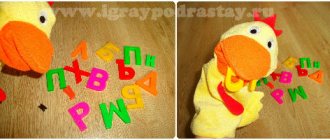Functional dyslalia
22.11.2019
The term “dyslalia” was introduced in the 19th century. After this, it experienced various changes in its meaning. Dyslalia is one of the most common diseases associated with speech . It is characterized by defects in sound pronunciation, but hearing and muscle activity of the speech apparatus are normal.
General information
This disease does not affect organ defects and the small number of muscle contractions necessary for pronunciation. The main factor in the violation of the pronunciation of sounds is the unfinished formation of the speech apparatus or incomplete education. Problems with sound pronunciation that are not corrected in time can become the basis for impairments in writing and reading.
Types of functional dyslalia
This disease can be classified in different ways.
Method 1. A pathogenetic approach is used in the treatment of various diseases. In this case, the predominance of speech-auditory or speech-motor impairment is taken into account. Using these data, 3 forms of functional dyslalia . This division affects the psychophysiological methods of speech , which have problems in the child and require correction with the help of a speech therapist .
Now we will look at these three types in more detail.
Motor functional dyslalia . This type is due to the inadequate readiness of the articulatory organs to perform speech motor acts, such as: holding the tongue and lips in the correct positions, timely switching from one articulum to another. As a result of incorrect interaction of nerve impulses and motor parts, impaired sound pronunciation is fixed.
Sensory functional dyslalia . This type is caused by insufficient development of speech by the hearing aid. As a result of underdevelopment, the phonemic system of the language cannot be formed.
Mixed functional dyslalia . Another name is sensorimotor. The fact is that the previous 2 types are related. Because of this, related factors underlie defective pronunciation. It often happens that incorrect sound pronunciation is associated with incorrect sound perception. Here there is a mixed connection of the above types.
Method 2. It is customary to consider this disease from another point of view. On the part of phonetic or phonemic disorders, the following division is carried out:
- acoustic-phonemic. The reason for this form is the child’s inability to distinguish sounds . Because they have similar pronunciations, he cannot fully understand what he hears, so such sounds are skipped, mixed or replaced;
- articulatory-phonemic. The child has not developed a set of adaptations to speech and the formation of sounds . For this reason, he changes sounds or tries to mix in order to somehow achieve the desired result;
- articulatory-phonetic. In this case, the activity of phonemic processes is completely preserved. Impairments affect the physical extent of speech . The defects consist of incorrect pronunciations of various sounds . The option with a complete absence of sound is practically never found.
Causes of functional dyslalia
In children with this disease, impaired sound pronunciation is associated with the course of neurodynamic processes occurring in the cerebral cortex . Compared to other similar diseases, the health of the sound-producing organs and their innervation are normal. This disease is characterized by biological and social factors.
Biological factors most often include:
- slight delays in the child's development. Most often, they go away on their own, but do not forget about the supervision of doctors and the continuation of the child’s education. If all this is left to chance, there may be significant complications;
- eating disorders. During the formation of the most important processes, we must not forget about proper nutrition. A child's food is different from what we eat. It should not include dyes, preservatives and other nasty things. A lack of vitamins, macro- and microelements, proteins, carbohydrates and fats in food can negatively affect the development of the child’s body. In this regard, the above problems and diseases may arise. It is also worth closely monitoring the health of the digestive system during this period.
Social factors include the following reasons:
- improper communication with a child , which includes distortions of words or various “bawls” that the child takes for normal speech ;
- communication at home in different languages can also lead to disturbances, since the child analyzes everything he hears, however, due to the abundance of words in different languages, distortions may occur;
- Neglect of learning greatly affects the child’s correct speech . This reason is typical mainly for dysfunctional families who devote little time to the child. He doesn't read books and doesn't show interest in learning. This is where all subsequent problems arise.
Symptoms of functional dyslalia
The first thing you need to pay attention to is, of course, distortions in the child’s sound pronunciation. Your attempts to teach how to pronounce sounds end in failure. Most of it comes out without errors, but then hissing, soft, whistling and hard sounds . Front and back lingual sounds are confused with each other. Seeing such problems, you must immediately contact a speech therapist to avoid complications.
Diagnostics
Diagnosis of this disease is very simple, but requires consultation with a speech therapist . The first thing the doctor is a conversation with the parents. You will have to tell in detail how you taught your child, when problems began to appear, and whether there were any diseases associated with the functionality of the nervous system .
This is followed by an assessment of the performance and elasticity of the speech apparatus. The child is asked to make simple movements, consisting of stretching his lips, turning and sticking out his tongue, and opening his mouth . Next comes a sound pronunciation check. At this stage, the main part of the defects is determined.
Finally, the child is asked to read words according to stress. hearing is tested .
Correction of functional dyslalia
Correcting such violations consists of teaching the child how to properly control his speech apparatus. Classes with a speech therapist should be held at least three times a week. Home training as recommended by a doctor . They should be broken up into small blocks of up to 15 minutes. There are no exact figures for the complete mastery of sound pronunciation: it all depends on personal indicators and the severity of the violations.
Prevention of functional dyslalia
From the very birth of a child, you need to monitor his health and strengthen his immune system . You need to spend more time with your child. Games and educational tasks will help your child with proper development. consultation with a doctor will not be amiss .
Conclusion
In conclusion, I would like to note that functional dyslalia is not the most dangerous and incorrigible disease. It is diagnosed in many children, albeit in different forms. Attention and care for your child will help you avoid unnecessary problems. Health to you and your family!
Published in Defectology Premium Clinic
Types and forms of dyslalia
In medicine, the following types of dyslalia are distinguished:
- mechanical – provoked by pathologies of the anatomical structure of the articulatory apparatus;
- functional dyslalia – develops due to neurodynamic problems in the functioning of the brain of a reversible nature or against the background of a social factor.
The latter form of dyslalia is divided into two more types - sensory and motor. In the first case, we are talking about disorders of the speech-hearing analyzer in the brain - sounds in oral speech replace each other, the child confuses voiced and voiceless, hissing and hard. The motor type of the functional form of the disease is characterized by imprecise movements of the lips and tongue, which affects the pronunciation of sounds.
When diagnosing a disease, doctors must determine how many sounds the child pronounces incorrectly. Depending on this indicator, the following types of dyslalia are distinguished:
- simple – the problem affects a maximum of 4 sounds;
- complex – the child pronounces more than 4 different sounds incorrectly.
Causes of dyslalia
They are divided into two large groups:
- functional reasons for the development of the disorder - the anatomy of the articulatory apparatus is unchanged, most often social or biological factors are triggered (copying parents who pronounce sounds/words incorrectly, learning several languages at once in the family);
- mechanical – there are disturbances in the structure of the articulatory apparatus (short frenulum of the tongue, micro- or macroglossia, too thick lips).
Before starting to solve the problem, doctors establish the true causes of dyslalia - the further correction program depends on this. For example, for mechanical reasons, minor surgical intervention may be necessary; if micro- or macroglossia is noted, then the normal physical and mental development of the child is called into question.
Correction of dyslalia
Work with dyslalia is carried out by a speech therapist - a specialist who can instill in a child the skills of correct pronunciation of sounds and words. The correction is built in stages:
- Preparation - the speech therapist must first establish contact with the child, arouse interest in classes, and adapt to the conditions of the office.
- Formation of primary skills and abilities - the specialist must teach the patient to correctly pronounce specific sounds, compare them with similar ones and differentiate them in words, distinguishing them by pronunciation.
- Formation of communication skills - the child learns to communicate using sentences, to speak with the correct pronunciation of all sounds.
The stages of dyslalia correction involve the use of various creative materials, exercises, games with words and sounds. The younger the child, the more game elements should be present in classes. Speech therapy work for dyslalia is carried out for a long time; the sooner parents discover the problem, the easier the correction will be. Most often, the prognosis for such a speech disorder is favorable; in most cases, success is guaranteed (if there are no mental development disorders).
Features of dyslalia of different types and forms, specific programs for correcting disorders are covered in detail on our website https://www.dobrobut.com/.




